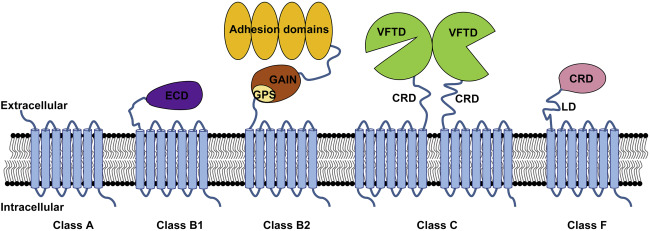The realm of G protein-coupled receptors (GPCRs) extends to GPCR Family C, a smaller subgroup when compared to Family A and B, comprising 22 distinct members. GPCR Family C sets itself apart by featuring extracellular domains endowed with expansive ligand-binding regions known as Venus flytrap domains. This unique attribute empowers Family C receptors to bind to large ligands, encompassing amino acids, neurotransmitters, and hormones, rendering them enticing targets for drug design.
An exemplary illustration of a Family C inhibitor involves riluzole, which actively inhibits the metabotropic glutamate receptor 1 (mGluR1). The mGluR1 protein governs neurotransmitter release and has been implicated in neurological disorders, such as epilepsy and Parkinson’s disease. By specifically targeting the Venus flytrap domain of mGluR1, riluzole emerges as a valuable treatment for amyotrophic lateral sclerosis, a debilitating neurodegenerative disorder.
Advancements in the field of GPCR Family C inhibitors have unveiled potential drug targets for numerous conditions, including schizophrenia, depression, and chronic pain. Furthermore, the advent of allosteric modulators, molecules that bind to sites distinct from the natural ligand, has opened up new avenues for targeting Family C receptors. These exciting breakthroughs hold the potential to pave the way for pioneering therapies addressing an array of neurological and psychiatric ailments.
In summary, the exploration of GPCR Family C inhibitors holds tremendous potential in shaping the landscape of targeted therapies, ushering in renewed optimism for the treatment of various neurological and psychiatric conditions. As research continues to progress, the identification of additional specific inhibitors and a deeper understanding of the underlying mechanisms will propel drug discovery efforts, ultimately resulting in improved patient outcomes and enhanced quality of life.




